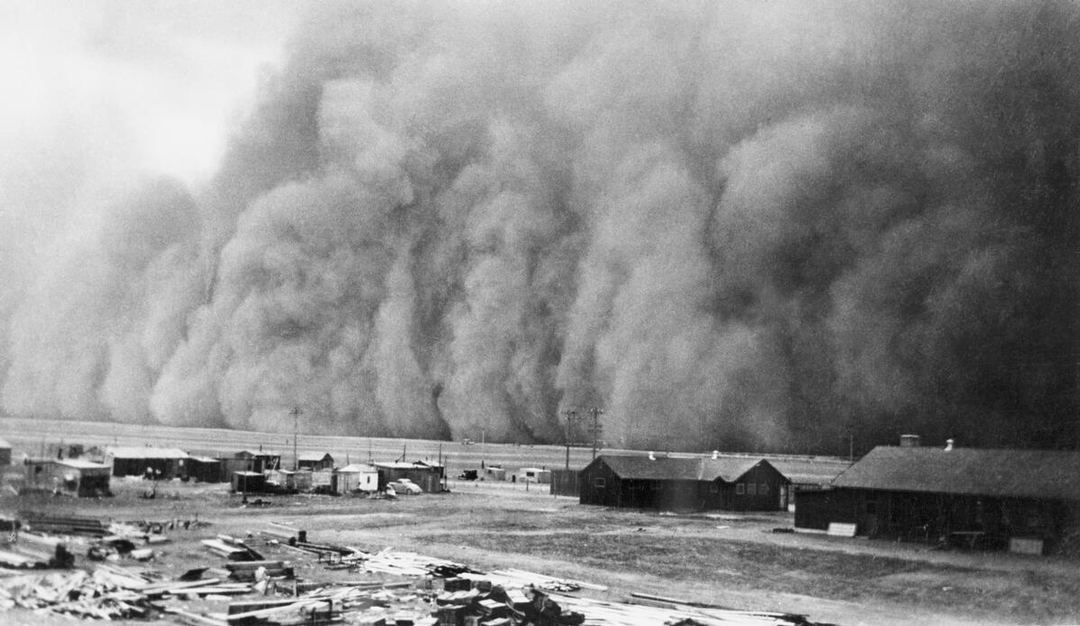DEVASTATION OF THE DUST BOWL DIDN’T PRODUCE IMMEDIATE AGRICULTURAL REFORM
PHOTO COURTESY OF GLENBOW LIBRARY AND ARCHIVES COLLECTION
Recent dry years have brought to mind the infamous Dirty Thirties, but this historical disaster was more than the product of drought, said Shannon Stunden Bower, an environmental historian at the University of Calgary.
Across the West, inadequate rainfall coincided with international economic depression and shockingly low wheat prices. Poor agricultural production techniques earned the era its Dust Bowl nickname. By 1910, government agencies and farmers knew growing practices were unsustainable. By the 1930s, soil degradation was widespread.
Surprisingly, the Dust Bowl didn’t inspire an immediate farming revolution. “There is some tendency to point to the 1930s as a period of significant, even radical, change in agricultural practice,” said Stunden Bower. “I’m not sure that can be demonstrated in the historical record.”
In the 1930s, farmers, scientists and government agents did experiment with new farm practices and strip farming was widely adopted to mitigate erosion. Despite this, the effects of the Dust Bowl lingered until the late 1940s. Increased rainfall that farmers mistakenly assumed to be the long-term norm also helped. However, lasting change didn’t gel until industrialization and the use of farm chemistry took off after 1945. With modern implements and chemical weed control, farmers worked the soil less often and erosion further eased.
“It’s important to remember how agricultural practices have changed over time,” said Stunden Bower. “It powerfully illustrates the ability of farmers and farm communities to adapt and do their best in difficult circumstances. It’s out of that broader, longer historical context we can understand how present circumstances have developed in this part of the world.”
She is careful not to downplay the social impact of the era. “The 1930s are remembered because of the profound impact that decade had on individuals, families and communities, and so it has become a benchmark. This was a devastating and traumatic period, and we should respect the importance of that.”
Stunden Bower is the co-author of the website Climate and Change: Making Sense of the Dustbowl Years on the Canadian Prairies: drc.usask.ca/projects/climate.







Comments